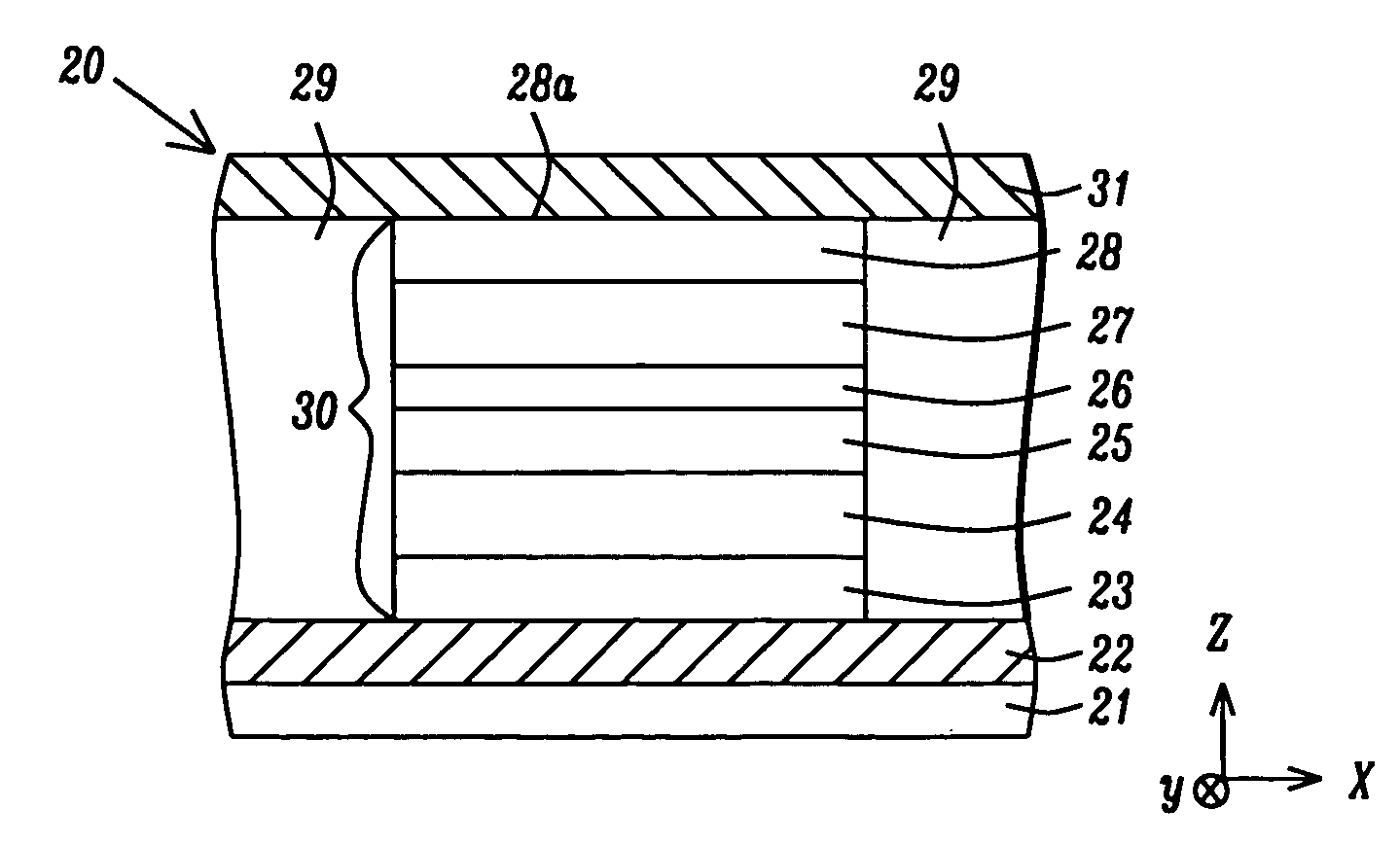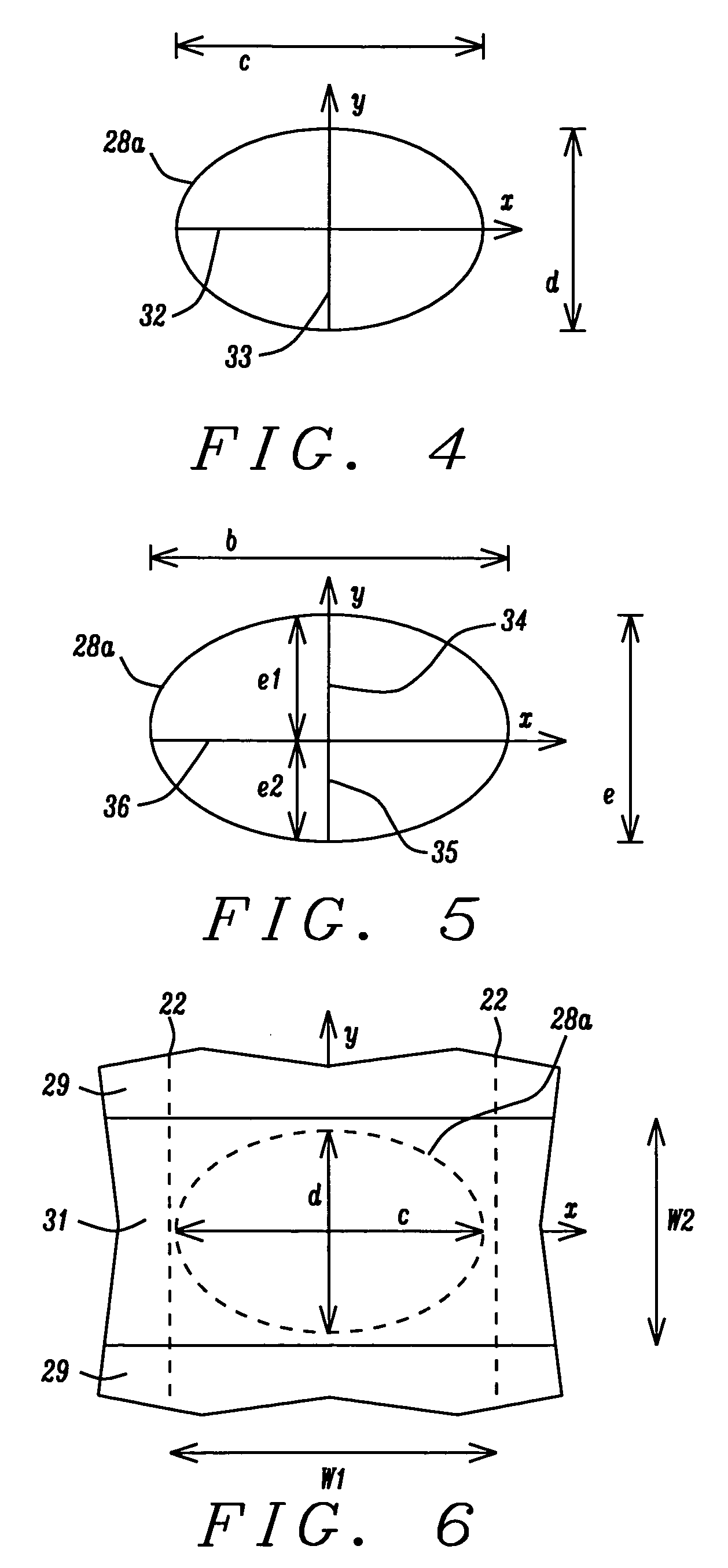Vortex magnetic random access memory
a random access memory and magnetic random access technology, applied in the field of mram cell structure, can solve the problems of inability to control the switching field, the magnetic state of a half-selected cell may be undetected, and the switching field is highly variable, so as to reduce the exchange coupling constant
- Summary
- Abstract
- Description
- Claims
- Application Information
AI Technical Summary
Benefits of technology
Problems solved by technology
Method used
Image
Examples
Embodiment Construction
[0032] The present invention is an MRAM structure based on an MTJ in which a free layer and a reference layer have a vortex magnetization state with a net magnetic moment of about zero that is induced and switched by applying a first magnetic field in a first direction and then a smaller magnetic field in an opposite direction. The drawings are provided by way of example and are not intended to limit the scope of the invention. Although only one MRAM cell is depicted in the drawings, it is understood that there are a plurality of MRAM cells in an array that has multiple rows and columns on an MRAM chip. While the exemplary embodiment relates to an MTJ with a bottom spin valve configuration, those skilled in the art will appreciate that the present invention also applies to a top spin valve configuration.
[0033] Referring to FIG. 3, a portion of an MRAM structure 20 is shown that includes a substrate 21 which may be silicon or another semiconductor substrate used in the art. The subs...
PUM
 Login to View More
Login to View More Abstract
Description
Claims
Application Information
 Login to View More
Login to View More - R&D
- Intellectual Property
- Life Sciences
- Materials
- Tech Scout
- Unparalleled Data Quality
- Higher Quality Content
- 60% Fewer Hallucinations
Browse by: Latest US Patents, China's latest patents, Technical Efficacy Thesaurus, Application Domain, Technology Topic, Popular Technical Reports.
© 2025 PatSnap. All rights reserved.Legal|Privacy policy|Modern Slavery Act Transparency Statement|Sitemap|About US| Contact US: help@patsnap.com



